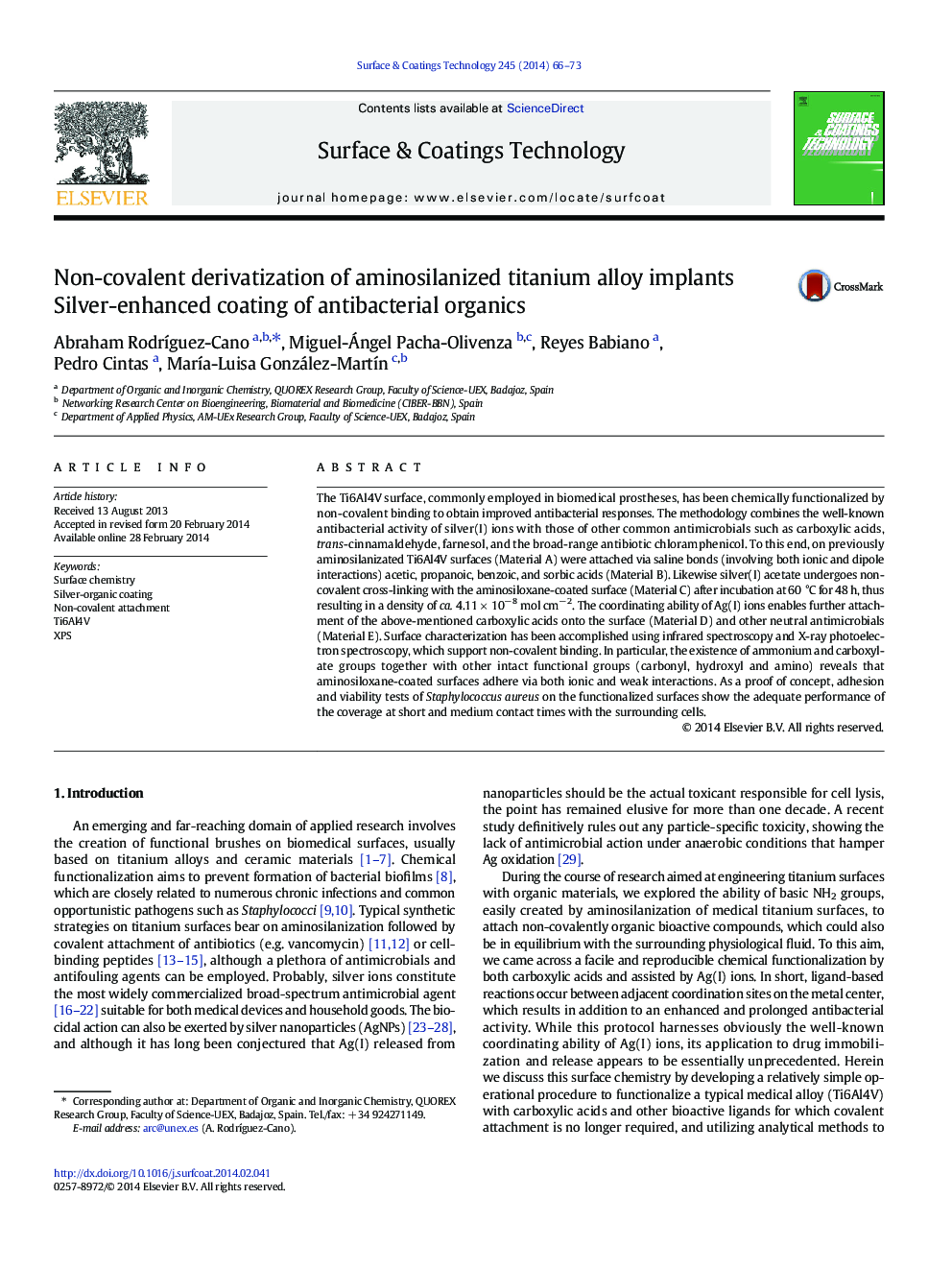| Article ID | Journal | Published Year | Pages | File Type |
|---|---|---|---|---|
| 8027917 | Surface and Coatings Technology | 2014 | 8 Pages |
Abstract
The Ti6Al4V surface, commonly employed in biomedical prostheses, has been chemically functionalized by non-covalent binding to obtain improved antibacterial responses. The methodology combines the well-known antibacterial activity of silver(I) ions with those of other common antimicrobials such as carboxylic acids, trans-cinnamaldehyde, farnesol, and the broad-range antibiotic chloramphenicol. To this end, on previously aminosilanizated Ti6Al4V surfaces (Material A) were attached via saline bonds (involving both ionic and dipole interactions) acetic, propanoic, benzoic, and sorbic acids (Material B). Likewise silver(I) acetate undergoes non-covalent cross-linking with the aminosiloxane-coated surface (Material C) after incubation at 60 °C for 48 h, thus resulting in a density of ca. 4.11 Ã 10â 8 mol cmâ 2. The coordinating ability of Ag(I) ions enables further attachment of the above-mentioned carboxylic acids onto the surface (Material D) and other neutral antimicrobials (Material E). Surface characterization has been accomplished using infrared spectroscopy and X-ray photoelectron spectroscopy, which support non-covalent binding. In particular, the existence of ammonium and carboxylate groups together with other intact functional groups (carbonyl, hydroxyl and amino) reveals that aminosiloxane-coated surfaces adhere via both ionic and weak interactions. As a proof of concept, adhesion and viability tests of Staphylococcus aureus on the functionalized surfaces show the adequate performance of the coverage at short and medium contact times with the surrounding cells.
Keywords
Related Topics
Physical Sciences and Engineering
Materials Science
Nanotechnology
Authors
Abraham RodrÃguez-Cano, Miguel-Ángel Pacha-Olivenza, Reyes Babiano, Pedro Cintas, MarÃa-Luisa González-MartÃn,
